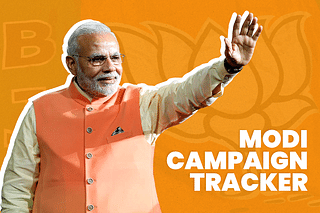Reports
Hridayapath, Dispatch 2: Discussing National And Local Issues In This Slice Of Northern Uttar Pradesh
Banuchandar Nagarajan
Apr 10, 2024, 05:16 PM | Updated Apr 20, 2024, 07:44 PM IST
Save & read from anywhere!
Bookmark stories for easy access on any device or the Swarajya app.
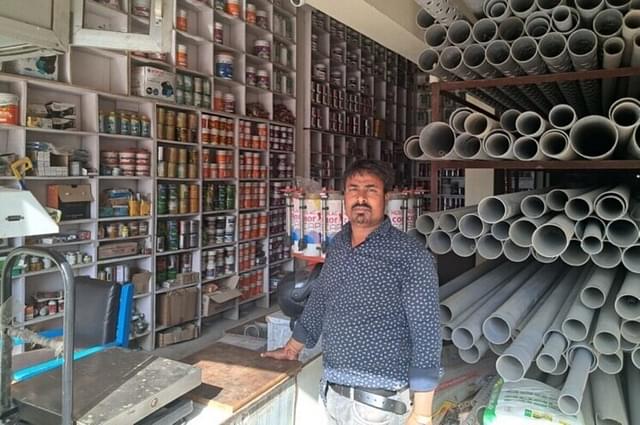
Let us talk poverty
The route from Lakhimpur Kheri to Bahraich takes you across two tributaries of the Ganga — Sharada and Ghagra. The land has been harvested and the yellow stubbles were glowing in the morning sun. A few workers were tilling the land perhaps for the next round of vegetable crops.
I wondered when robots start working in the field, the farmers might become emotionally detached from the farms, and thus triggering the agglomeration of land parcels. Perhaps, the robot farm labour may end up doing "land reforms!" Let us see.
We stop at a CNG station just before Bahraich. This stretch in Northern Uttar Pradesh — Bahraich, Shravasti, Balrampur, Sitapur, Siddhartha Nagar — bordering Nepal is among the poorest in India. The NITI Aayog report on multi-dimensional poverty puts the rate to be at 72 per cent in 2015 for Bharaich. Three-fourths were poor 65 years after independence! Can you believe it?
Now, in a short span of eight years, the number has come down to 55 per cent. Still very high; but what a stunning reduction! That was going to be the topic of enquiry today. Take a look at the chart below for reference from the NITI Aayog report:
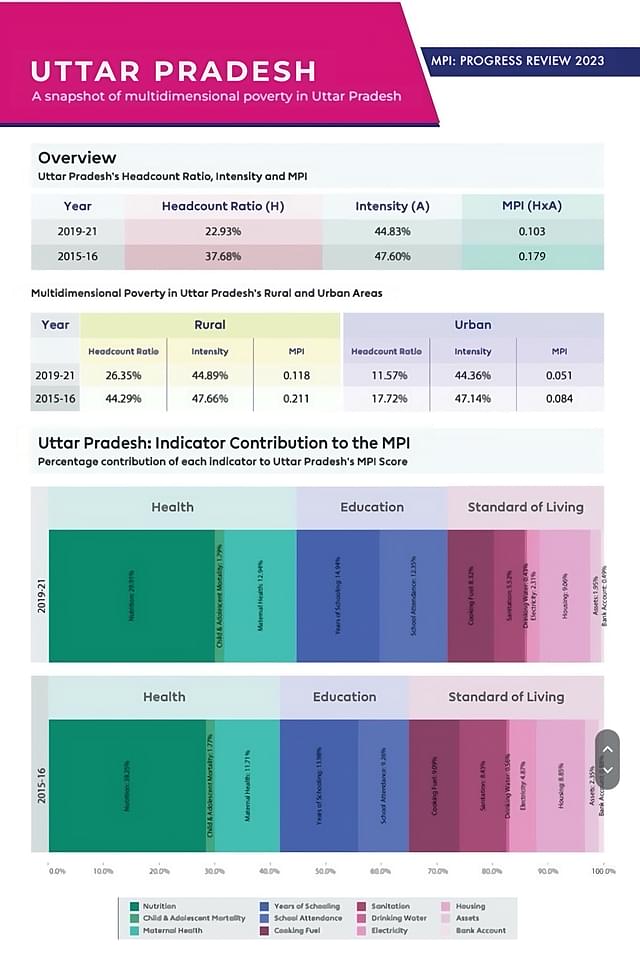
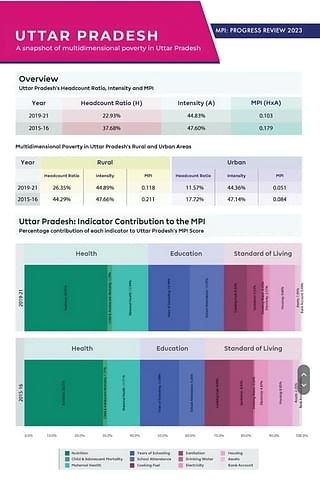
I get chatting with a motley mix of buddies — Sudhir Yadav, Ghanshyam Thakur and Ashok Shukla. They were doing part-time work at the CNG station. I start with politics. As a background, Bahraich is a SC reserved seat. It has approximately 2/3 Hindus and 1/3 Muslims. BJP has replaced its winning candidate Akshaibir Lal with his son Dr Anand Gond. SP candidate is Ramesh Gautam.
Sudhir says that there has been all-round development in the area in the last 10 years. He points to the road and says that it was a kaccha road just a few years ago. Law and order was a big issue, with a lot of gundagardi. There was a time, apparently when the accused used to call up politicians and get themselves released from prison. Not anymore in Bulldozer Raj! There is almost 24 hours of electricity. The hospital nearby has been upgraded.
"There is free ration and there are mobile phones, people are happy," Ghanshyam said with a laugh (Modern avatar bread and circuses?). He said that corruption is still there, but not rampant like 10 years ago.
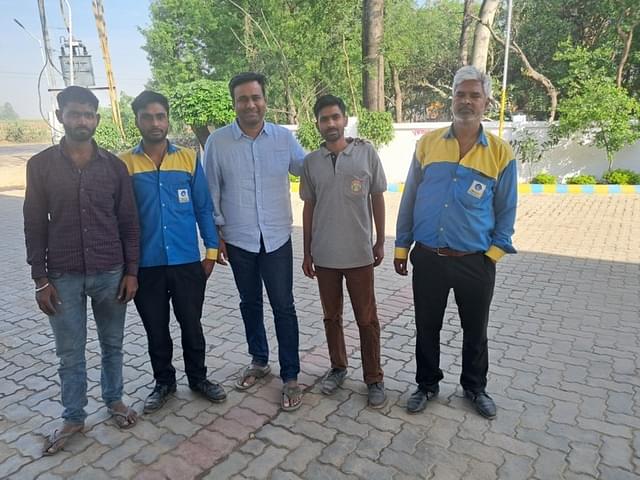
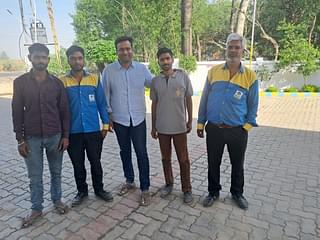
Apparently, the farmers in the area are a happy bunch as they just got the payment of Rs 2,000 from Krishi Samman. The Fasal Bima Yojana is also going on well. There are a few people who have got housing loans under the PM Awas Yojana. The toilet building, he says, is under the grip of the village Pradhans. He said that the water connections under the "Har Nal Pe Jal" is slow.
The biggest issue is the outward immigration and the lack of jobs. People from Bahraich move to different parts of India — Mumbai, Bangalore, and Delhi — for work.
Let us look at a few other figures from the NITI Aayog report on the neighbouring districts. Shravasti has reduced its poverty rate from 75 per cent to 50 per cent. Balrampur has reduced it from 57 per cent to 36 per cent.
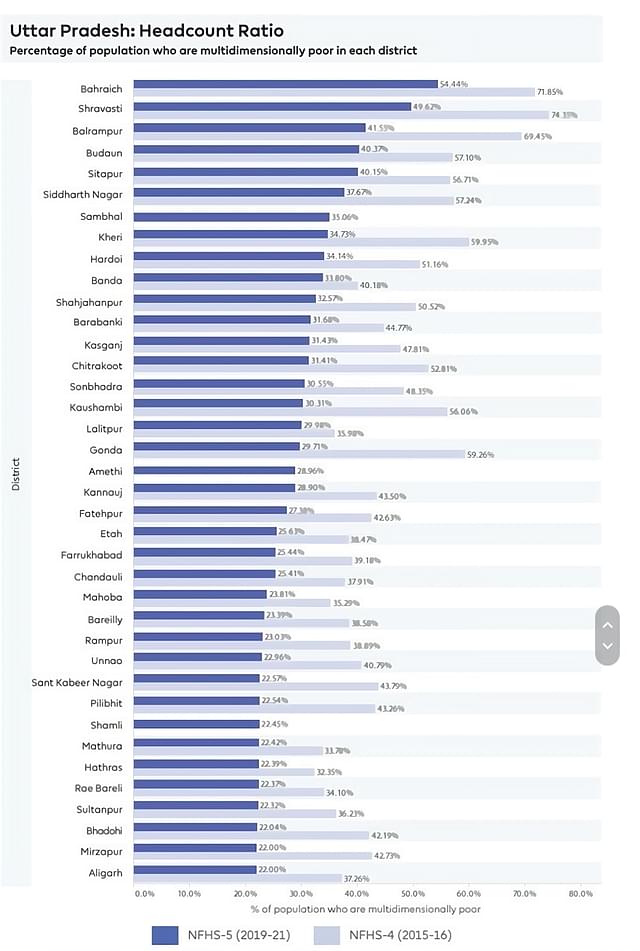
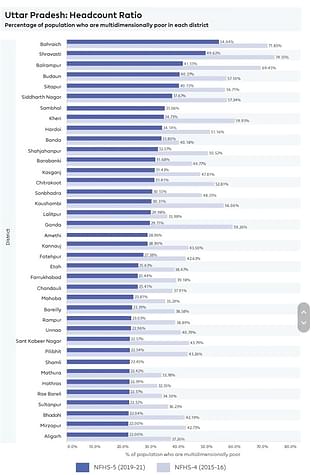
So, what I learned is that there is a saturation of provision of basic communities even in far-flung areas. It is heartening to know that even in the remotest parts of India the government schemes are implemented with gusto and people are happy with the benefits.
The "Double-engine Sarkar" slogan sounds like a political catchphrase. But, I have come to believe that it represents the comprehensiveness of the welfare programs. Not everyone is intellectual enough to know what falls under the state list or the concurrent list.
For instance, law and order and roads are spoken in the same breath. Yogakshema is a comprehensive paradigm, and the division of labour between various state organs is just that. The coordination is the government systems problem. The customer should not be worried about who meets her demand!
Now, we can see why it is no surprise that Modi wins even in poor areas. The development momentum is on and it is irreversible.
From here I move on to Shravasti.
The local party-wala
The Shravasti Lok Sabha seat has 62 per cent Hindus and 38 per cent Muslims. The current MP is Ram Shiromi Verma from the BSP. He won against Daddan Mishra of the BJP.
Mind you, SP and BSP were in an alliance in 2019. But Verma has now been expelled from the BSP for anti-party activities. The BSP and SP are not together anymore. BJP has fielded Saket Mishra from this seat. He is expected to sail through.
In Shravasti, I met with Neeraj Tripathi, the local media in charge of the BJP (as he claims). He comes across as a very earnest young man. He listed the local impacts of the government schemes in fair detail. But he was also quite candid about the shortcomings.
There has been a major water problem for a long time that is being solved now. An area blessed with so many rivers had last-mile connection issues and nobody took the initiative to solve it. So lackadaisical!
Neeraj spoke to me about Kaushal Vikas Yojana and Mudra loans. I have not heard from the other people about these schemes on my trip yet. So, a pleasant surprise!
There was an old man who was hearing this conversation and chipped in to add that a bridge over the nearby Rapti River was being built and that he was pretty excited about it, since he has been crossing the river in a boat so far.
We ended by chatting about the neighbouring Kaiserganj, the fortress of the strongman, Brij Bhushan Sharan Singh. The BJP is yet to announce the candidate from there, but it seems that the many educational and other institutions he has helped create will help him win (if he contests).
I am bound eastward. There is a prominent Buddhist site called Jettavana just off the highway. Do you remember you remember the story of Angulimal and Buddha from school? It is supposed to have happened here! The Shaktipeeth of Pateshwari Devi Mandir is at nearby Tulsipur.
Balrampur falls under the Shravasti Lok Sabha constituency. And there is a Balrampur district and a separate Shravasti district. Mildly confusing! In UP, there are 80 constituencies and 75 districts. So there is a bit of overlap. Hopefully, post the expected delimitation, it will be clearer (to the South Indians too!). Also, Balrampur district is under the Aspirational Districts Programme.
Balrampur is home to the eponymous. Balrampur Chini Mills runs the largest sugar factory in India here. It is a massive operation with a huge mandi receiving trucks laden with sugarcane. They have their own private railway line!
The myth of the K-shaped recovery
If you have read the financial press, you would not have missed the "K-shaped recovery" theory, which posits that urban India prospering and rural India is stagnating post the pandemic. FMCG blames the slowdown in rural sales for their troubles in the stock markets. SBI Economist Saumya Kanti Ghosh wrote a nice rebuttal to the theory.
In the budget, the government shunned fiscal stimulus to boost consumption. Finance Secretary, TV Somanathan even said that it is not the government's job to boost consumption!
I wanted to find out for myself. Anand Nagar in Maharajganj seemed to be a good place to check it. It is represented by Pankaj Choudhary, who is the Minister of State for Finance. He polled more than 7 lakh votes last time. The Choudhury Chaurasias is a dominant community here. Even the Congress has fielded Vijay Choudhary.
I met with a building materials dealer, Sailesh Agrahary, who runs a very impressive paints /tubes/ceramic shop. He said that the has the demand has been growing and it is steady since 2022.
There has been a spurt in the construction of homes especially in the rural areas because the procurement prices of wheat have increased by Rs 150 per quintal (The centre aims to increase procurement seven-fold!). Remittances from locals working in Delhi or Mumbai are also helping in home construction.
Building construction is the best indicator of the health of the economy. The many brick kilns in the state seem to be on all the time! So the K-shaped business seems to be on weak footing, at least here in Purvanchal.
This report is part of Swarajya's 50 Ground Stories Project - an attempt to throw light on themes and topics that are often overlooked or looked down. You can support this initiative by sponsoring as little as ₹2999. Click here for more details.
Read the first article in this series here, and the third here.
Save & read from anywhere!
Bookmark stories for easy access on any device or the Swarajya app.
Banuchandar is a political and public policy advisor. He posts at @Banu4Bharat.
Support Swarajya's 50 Ground Reports Project & Sponsor A Story
Every general election Swarajya does a 50 ground reports project.
Aimed only at serious readers and those who appreciate the nuances of political undercurrents, the project provides a sense of India's electoral landscape. As you know, these reports are produced after considerable investment of travel, time and effort on the ground.
This time too we've kicked off the project in style and have covered over 30 constituencies already. If you're someone who appreciates such work and have enjoyed our coverage please consider sponsoring a ground report for just Rs 2999 to Rs 19,999 - it goes a long way in helping us produce more quality reportage.
You can also back this project by becoming a subscriber for as little as Rs 999 - so do click on this links and choose a plan that suits you and back us.
Click below to contribute.

